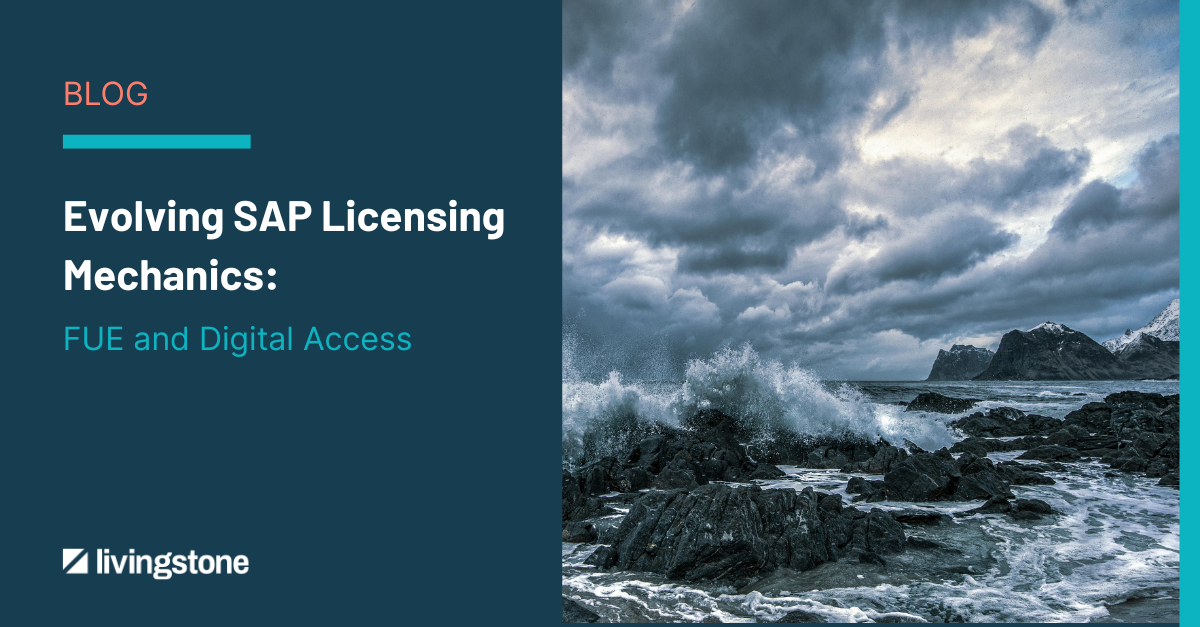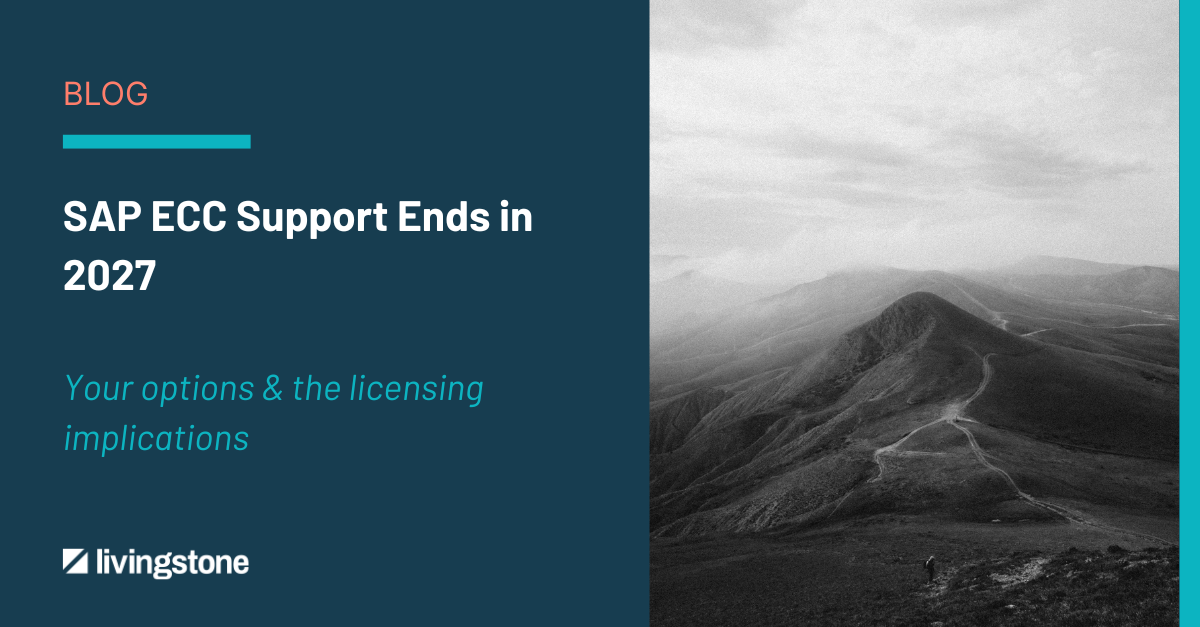On the surface, Oracle Unlimited Licensing Agreements (ULAs) look like a tempting all you can eat buffet, or a security blanket. But the truth is, except for a few high growth organizations who will benefit from it, ULAs are a money trap for 99% of organizations. In this in-depth blog, we dig into the subject of ULAs, what they are, who they’re a good fit for, the real reason why most people buy them, how to prepare for a ULA, and critically, how to escape from the ULA renewal cycle trap. Let’s dive in.
Jump to a specific section:
- What is an Oracle ULA?
- Who would benefit from an Oracle ULA?
- The real reason people buy Oracle ULAs
- How to prepare for a ULA
- How to get out of the ULA with certification
- How Livingstone can help
- Learn more - Get the video series
What is an Oracle ULA?
An Unlimited Licensing Agreement (ULA) allows a customer to select several Oracle products and deploy these products as many times as they like. The customer pays a set fee for this unlimited deployment right and a set fee for the support & maintenance. Both fees remain unchanged for the duration of the agreement regardless of the number of deployments of the products within the agreement. A ULA consists of:
- Unlimited deployment rights for the products included
- Technical support caps, which means the price of support is fixed for the agreement period
- Extended support waiver meaning customers don’t have to pay for extended support for any of the products included in their ULA
- No audit clause, in which Oracle agrees not to audit the customer for the duration of the contract
An Oracle ULA is one of the most expensive contracts out there. Prices can start from $1 million and rise to more than $20 million, depending on the size of the organization and the number of products included in the ULA. And yet 99% of organizations don’t use the full extent of the technology they are paying for.
That’s because organizations often add too many products or overestimate their usage purely to avoid being audited. This means they’re paying millions of dollars in shelfware simply to keep the wolf from the door. That’s a huge amount of money that could go back into your pocket instead of Oracle’s coffers. Let’s investigate who would benefit from a ULA and how to structure it, before we explain how to escape it should you have one.
Who would benefit from an Oracle ULA?
A ULA is good option if a business expects to significantly grow its Oracle footprint in the next three to five years. These organizations can rapidly expand and digitally transform using as much of the named Oracle software as needed throughout their agreement period without restrictions or having to slow progress to renegotiate new Oracle contracts. They want the ease of not having to buy the licences individually or they may have made acquisitions and want to merge all the separate contracts into a single support stream.
This was the reason ULAs were created. But that’s not why most people buy them.
The real reason most people buy ULAs
By far the most common reason people choose a ULA is for protection. Either they or Oracle believe there may be compliance issues discovered during an audit, or to shield themselves before an audit takes place. In these cases, a ULA is presented as the most cost effective and simple commercial solution as ULAs contain a ‘no audit’ clause.
But many of these organizations are stagnant in their growth of on-premise Oracle technology, which means they end up paying for technology they’re not using – shelfware – to avoid a compliance issue. It’s like paying for an all-you-can-eat buffet, but only having a single plate of food with just a fraction of what you’ve paid for, just to ensure you don’t potentially go hungry!
They then become trapped in a three-to-five-year ULA renewal cycle. That’s because there’s an assumption that compliance isn’t needed as they won’t get audited. When the next renewal comes around, they aren’t sure if they are compliant, so they simply renew, costing them millions in wasted spend. And they kick the compliance can down the road.
How to prepare for a ULA
It is important to realize that a ULA is not a one-size-fits-all agreement and will not be suitable for every organization. It’s critical that you leave sufficient time to plan, measure and negotiate the ULA. It will typically involve input from CIO, CTO, IT Director(s), Head of Procurement, an internal project sponsor, and ideally, an external Oracle specialist like Livingstone to identify potential pitfalls. You need to consider the following when preparing for a ULA:
Your environment
- Which products do you want to include in the ULA?
- How many licenses do you currently own?
- How many installs do you have now and how many do you estimate you will have by the end of the agreement?
Total Support Stream, Price Caps and Price Holds
When adding products into a ULA all previous perpetual licences are terminated because it is impossible to own both a limited and unlimited number of licences. All products within the ULA will fall under a single CSI (Customer Support Identifier). The associated support fee paid for any products listed in the ULA is capped and fixed for the agreement duration.
While this means you will know what your support costs are for the next three-to-five-year period, it also means you must pay for support on all the products covered by the contract, even if you no longer use that product. You are not able to terminate future support on any single product on that CSI. The Total Support Stream is all or nothing, forever.
A ULA does give you the ability to negotiate price holds for products not included in the ULA. You should ensure these price holds are included in your contract even if you never buy the products, so that the agreed price is applied should you wish to use them in the future.
Oracle in your cloud environment - VMware and Hyper-V CPU count and licensing
You must count every CPU in your virtualized environment to maintain compliance. Failure to supply an accurate count will lead to non-compliance. Many organizations are unaware of this.
Mergers, acquisitions and divestitures
Your business activities impact who can access the unlimited agreement. During legal changes like mergers, acquisitions and divestitures, the users of your ULA may be impacted.
If you are an acquisitive company, you need to pay close attention to how many licenses are being acquired as part of the deal. You can then properly plan how they will be absorbed into the acquiring company’s ULA Total Support Stream. There may be additional conditions to consider based around corporate revenue and headcount.
If you know you will be divesting parts of the business during the agreement period, you can negotiate a divestiture clause that allows divested entities to continue using Oracle software for a set period (6-24 months), ensuring compliance until they can negotiate their own licensing deal.
Most organisations don’t realise that they can negotiate these terms up front. Once a ULA is signed, Oracle won’t go back and change the contract so due consideration should be given to these possibilities in advance.
The customer definition clause
When defining your ULA, you need to be clear on what the legal entity is that the ULA covers. If parts of a group or subsidiaries are not defined in the ULA, those parts of the organization do not have the right to use the software directly or indirectly as part of the ULA, again giving rise to compliance issues.
As we’ve outlined, a ULA isn’t a standard agreement, and it can be customised. It is critical to prepare in advance and closely examine the ULA before signing.
How to get out of the ULA with certification
If you have a ULA and your renewal is coming up, Oracle will be only too happy to put a new ULA agreement in front of you to sign. It’s one of its most profitable licensing agreements. They know that exiting your ULA takes effort and is often stopped due to fear of non-compliance. But the difference to your IT budget could be millions. So how do you exit your ULA and escape the renewal trap?
Maintain accurate license counts
Renewal and exit costs are calculated based on license usage at the end of your ULA. It is important to maintain accurate license counts throughout the agreement period – so ensure you have a license management system in place from the outset. If you haven’t done this, there is work to be done. Livingstone can help you create an Effective License Position to give you clarity on your license usage.
Self-audit and certify
If you want to certify out of your ULA agreement, look up the certification clause which outlines your responsibilities. You need to conduct a self-audit to create a list of all the products from your ULA that are in use and the quantities that you’re using them. This certification list must be signed by a C-level executive from your organization on a set date.
Take note of two sub clauses:
- Cloud deployments: if you have a right to deploy your Oracle products into public cloud environments, this clause states how to convert V-CPUs from those environments into Oracle processor licenses as part of certification.
- Self-audit: As part of the exit, you agree to provide Oracle with any additional information or assistance to validate the numbers provided within your certification. You will have to self-audit your use of the unlimited use programs as part of certification process. Oracle will give you a blank Oracle Server Worksheet (OSM) which you must complete. This provides information on the infrastructure running Oracle products. This gives customers a great opportunity because the same punitive licensing rules that drag customers into ULAs, can be used back on Oracle, allowing customers to maximise the number of licenses they take out without financial penalty.
Technical support
Review your technical support clause in your ULA contract. This will detail the cost of technical support when you exit the ULA. Customers can negotiate price caps for future years. If they don’t, Oracle will automatically add an 8% price increase year on year.
If you want to exit your ULA – and we advise most organizations do - don’t underestimate how long it takes to mitigate the risk so that you exit with limited penalties. Ultimately if you have a compliance issue, you will have to pay that back at some point. But it’s far better to pay it back now, than to spend years renewing your ULA, paying millions for software you don’t use while worsening your compliance position. Let Livingstone help you prepare the information you need to be able to exit your ULA with confidence and put your Oracle spend back in your budget.
How Livingstone can help
Livingstone is an independent provider of software and cloud asset management and optimization services. We work with organizations across the world to deliver remarkable client outcomes including:
- 38% average savings
- $3bn total savings delivered
- 8m mega vendor seats negotiated
- 9m assets under management
We help clients to avoid unnecessary cost and risk, whilst driving value from their investments throughout their lifecycle. Our Oracle specialists know what to look for when either setting up a ULA or trying to exit from one. Contact us to get our help with your ULA negotiations.
Learn more - get the video series
If you prefer learning by watching and listening – or want a more in-depth recap of what you’ve just read, click the button below to sign up to access the three-part video series on Oracle ULAs with expertise from Livingstone’s Ben Dove, an Oracle licensing specialist.
About the author:
Ben Dove
Principal Consultant

Principal Consultant and Livingstone's Oracle of Oracle, Ben Dove is a Leader, Manager and Consultant in Software Asset Management, an ITAM and Licensing Expert, and an Enterprise Technology enthusiast.
Connect with Ben →




